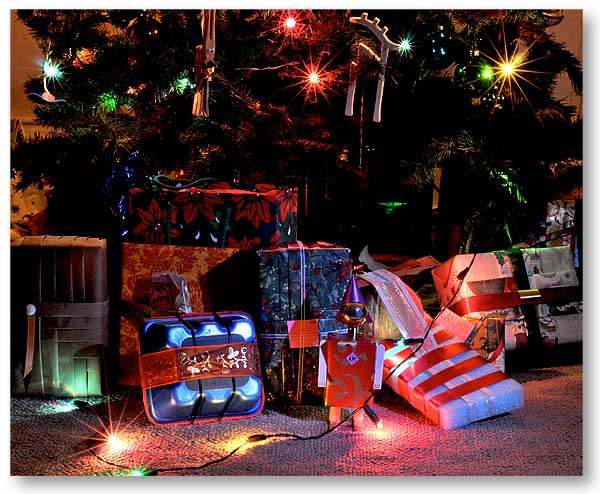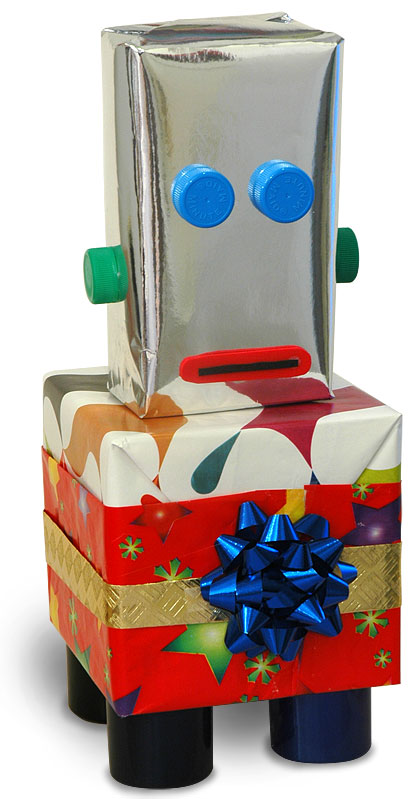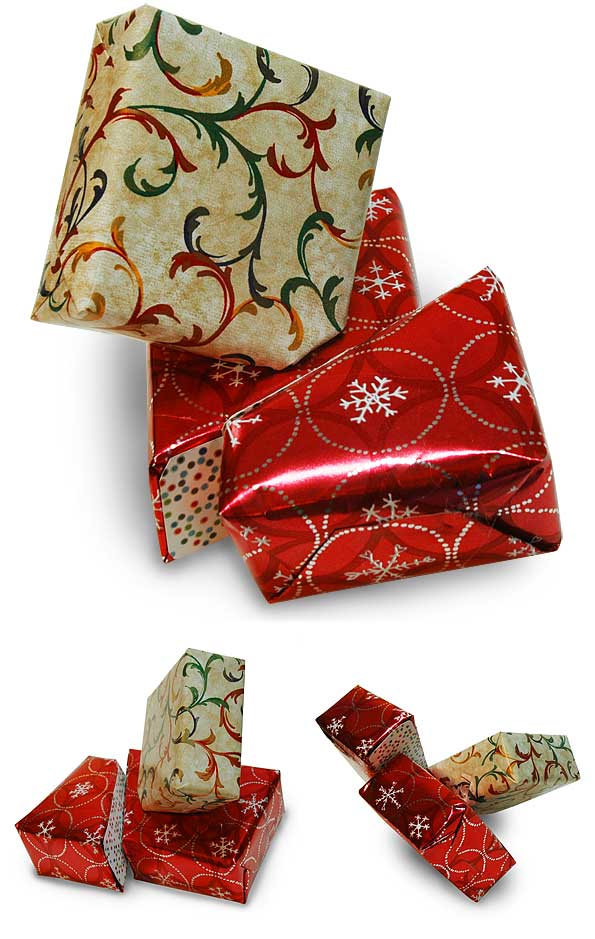 I have been thinking about multi-box wraps since I did the cow wrap at Christmas. In this case I was thinking about literal cubism. I wanted to see sliced and interpenetrating boxes.
I have been thinking about multi-box wraps since I did the cow wrap at Christmas. In this case I was thinking about literal cubism. I wanted to see sliced and interpenetrating boxes.
An important detail in executing this wrap is to cut the boxes before you put the gift in the box.
I cut the red-wrap box using a scroll-saw. But the little box’s angle made this impossible. Instead, I drew the cut line onto the box and then sliced the line using a box-cutter. I placed the cut ends of the boxes onto a sheet of cardboard and traced the incised opening. I cut those shapes out, and, using hot glue, I attached the three pieces to the three open ends of the two boxes. That would give the boxes the rigidity they need for wrapping.
I chose to wrap them in scraps of traditional wrapping paper in order to use the contrast of tradition and innovation. I’d never tried traditional fold-n-wrap on such odd shaped boxes. Amazingly it is not that hard if you go slow and watch where the paper wants to make folds.
On the red box, I had the idea of gluing on a patch of contrasting paper, in this case the charming patterns from a Clark Richert retrospective invitation. The purpose was to show that this surface was the inside of something that had been sliced.
Next I had to play with the three parts and figure out how best to assemble them. Then I hot-glued them together.
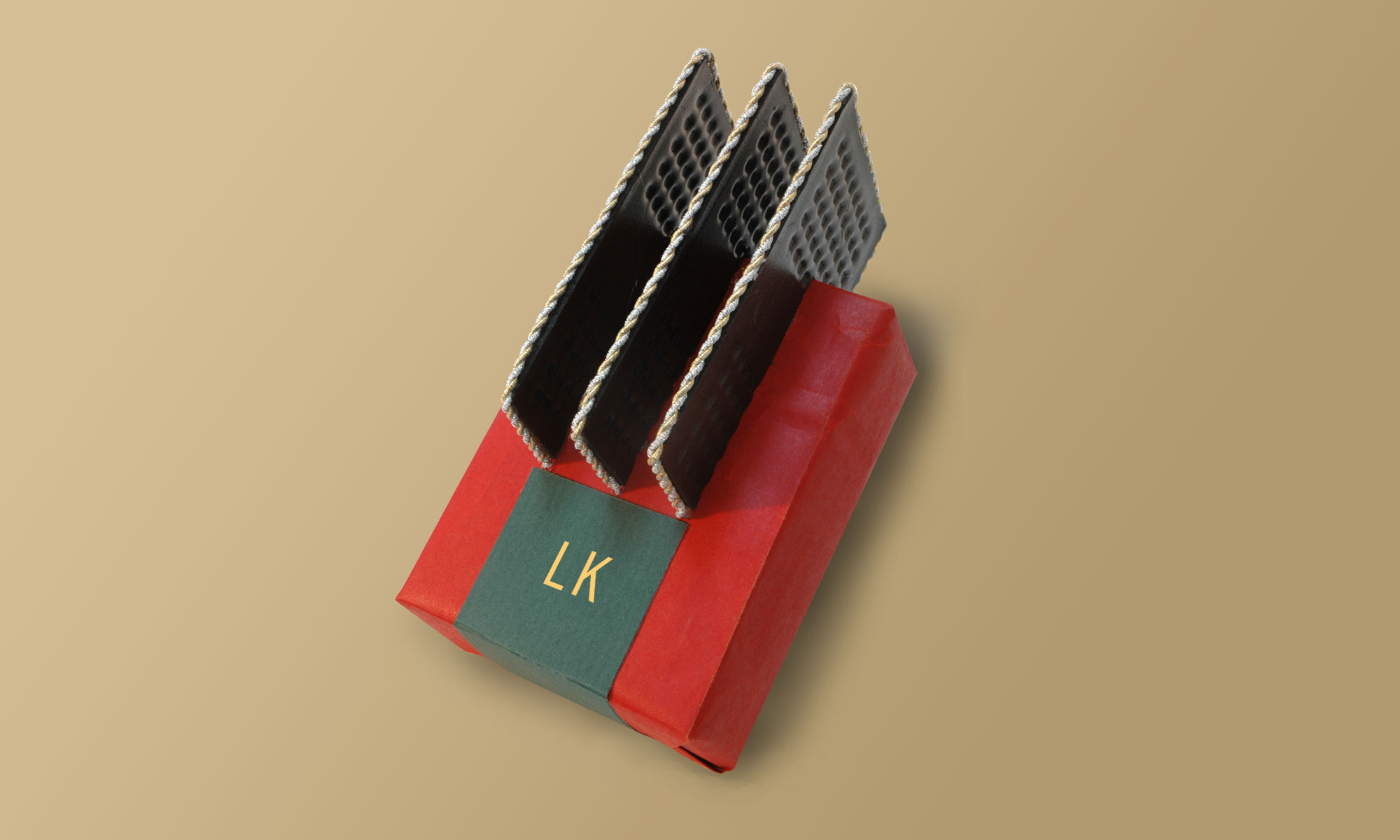
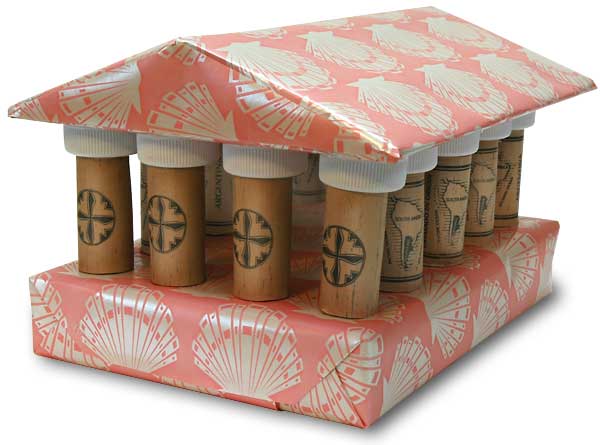
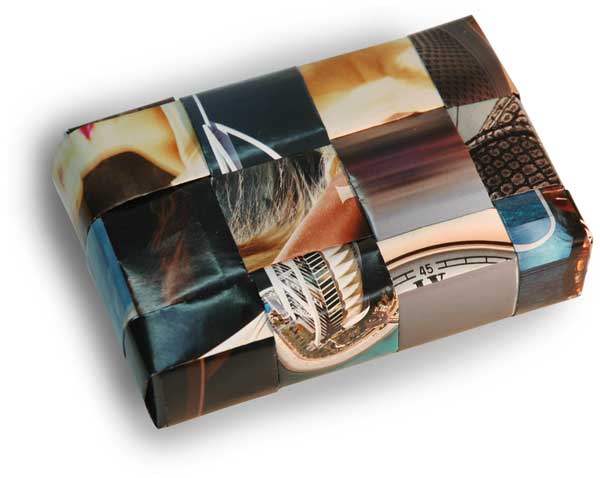 Wrapping with bands is a great way to take advantage of our print-rich environment. I take magazine pages and cut them into long strips, 2″-5″ wide. Fold the two long edges over. This gives both the edges and the whole band a softened and rounded look, a pillow effect.
Wrapping with bands is a great way to take advantage of our print-rich environment. I take magazine pages and cut them into long strips, 2″-5″ wide. Fold the two long edges over. This gives both the edges and the whole band a softened and rounded look, a pillow effect.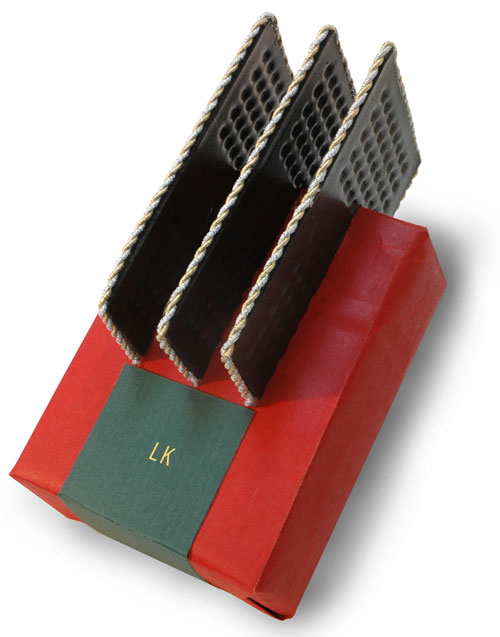
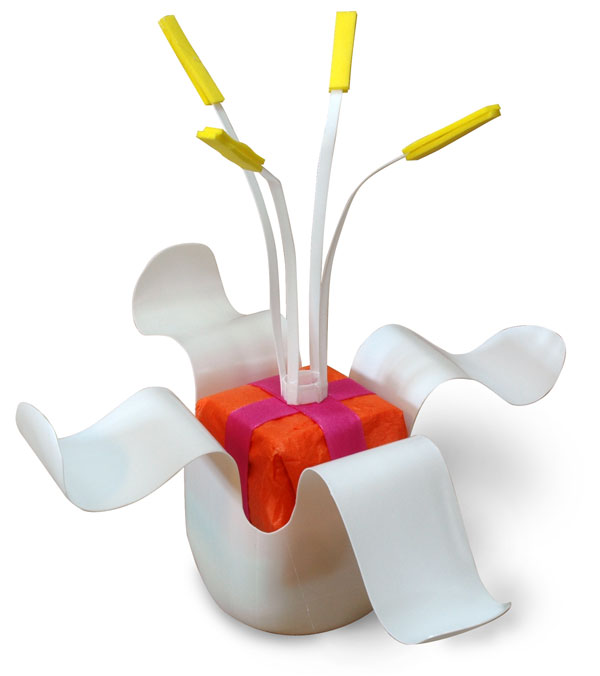 I took a kefir bottle and cut off the printed wrap. Underneath it was a pure white bottle. I cut off the top area and then took scissors and cut down along the corners and back up again, four times. This made the four petals. I trimmed their tops to round them out. Working the petals with my fingers I was able to give them soft curves.
I took a kefir bottle and cut off the printed wrap. Underneath it was a pure white bottle. I cut off the top area and then took scissors and cut down along the corners and back up again, four times. This made the four petals. I trimmed their tops to round them out. Working the petals with my fingers I was able to give them soft curves.
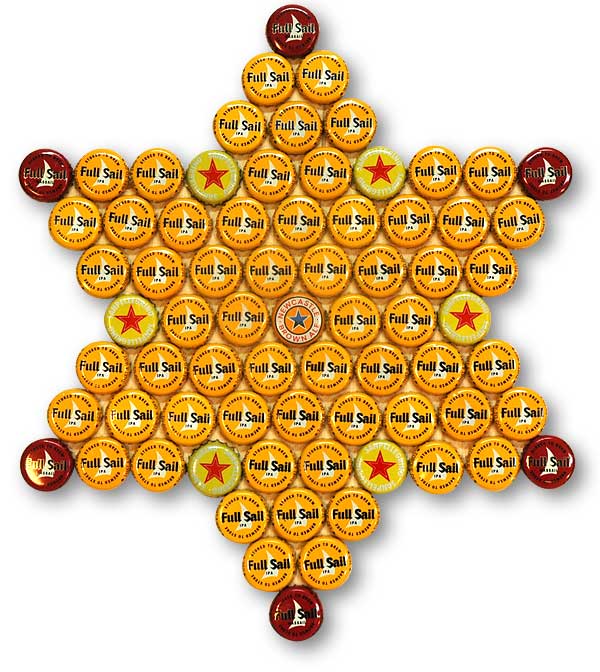
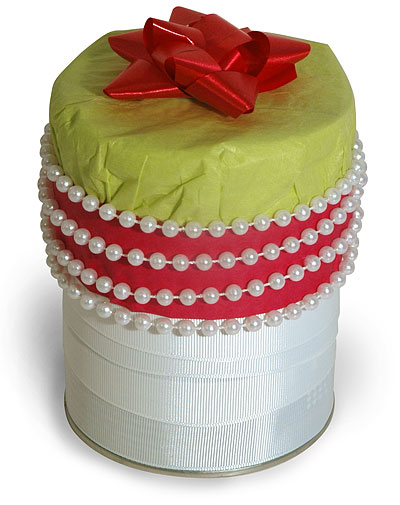 When I’m running out of wrap time, I reach for ribbon and tissue. In this case I wrapped a tin of coffee with a large white ribbon, which covered the entire tin. I capped it with a piece lime-green tissue. The third layer is a piece of red paper folded into a “ribbon.” The folding gives this quasi-ribbon a satisfying dimension and a softened edge.
When I’m running out of wrap time, I reach for ribbon and tissue. In this case I wrapped a tin of coffee with a large white ribbon, which covered the entire tin. I capped it with a piece lime-green tissue. The third layer is a piece of red paper folded into a “ribbon.” The folding gives this quasi-ribbon a satisfying dimension and a softened edge.